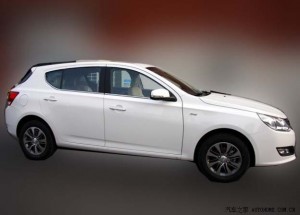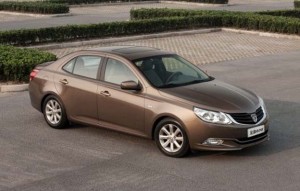A new brand General Motors launched only three years ago is poised to double its sales this year as GM continues to move ahead with its rapid expansion in China.
Baojun, the brand that belongs to the Shanghai-GM-Wuling joint venture sold 100,000 cars last year and sales are expect to climb to 200,000 units for all of 2014, according to Ray Biezrynski, executive vice president of SGM-W, one of the cornerstones of GM’s ongoing expansion in what is now the world’s largest automotive market.
The growth of the Baojun brand could be particularly critical considering GM last year slipped behind long-time rival Volkswagen AG, now the Chinese market sales leader. But the impact isn’t limited to China. The booming Asian nation now accounts for more than one third of GM’s global sales.
Baojun was created at the urging of China’s central government, specifically to appeal to Chinese customers beyond the cities of “Coastal China” that initially ignited and drove the country’s rapid economic expansion. The rapid growth of car sales is rapidly spreading from the mega-cities of Beijing, Shanghai and Guangzhou to so-called Tier 3 and 4 cities where income is also on the rise. There are more than 200 cities in China with a population of over 1 million.
The target markets for Baojun are in places such as Fushun, which is described by the Chinese government as a “tier-four city in North East China, with a vibrant regional economy based on the extraction and processing of natural resources where the car ownership is still relatively small, only 16 vehicles per thousand resident.”
The Boston Consulting Group recently released a study predicting that growth in the global auto industry over the next decade will depend on the development of car sales in emerging markets such as South East Asia, the Middle East and Africa.
But the automotive market in China has become so large and so complex that it now contains its own “emerging markets,” where vehicle ownership or density – passenger cars per 1,000 residents – is still not much higher than in Fushun. But sedans, hatchbacks and multi-purpose vehicles are starting to replace the bicycles, motorbikes and three-wheeled trucks that for much of the past century have served as personal transportation across much of China.
SGM-W EVP Bierzynski said the Baojun brand has benefited from the expansion of GM’s manufacturing capacity. GM plants in China utilize the latest equipment and techniques to both ensure higher quality and lower costs to produce the price points required to make new vehicles attractive to those “emerging” Chinese customers.
(Karma making a comeback. For more, Click Here.)
GM now has formed a number of different joint ventures in China. It first paired up with Shanghai-based SAIC to produce Buicks in Shanghai. It also has partnered with Wuling, a brand perhaps best known for its microvans and other products that serve as the gateway for value-conscious consumers to the GM product line in China.
(Click Here to get an early look at an expected drop in GM, Ford Q1 earnings.)
Wuling, which traces its roots back to the 1960s, the era of China’s cultural revolution, was set up by the country’s central government to make farm equipment. It still sells vehicles that appeal to customers in rural China.
During the press preview for the Beijing International Auto Exposition this month, Baojun introduced two new models, the Baojun 610, a hatchback version of the existing Baojun 630, and Baojun 730, a multi-purpose vehicle that can carry up to seven passengers, a popular configuration in China.
(To see more about J.D. Power’s latest acquisition, Korrelate, Click Here.)
Chin-Lim Ong, GM China’s director of vehicle sales, service and marketing, said GM stands to benefit from a number of different trends at work in the Chinese market. Chinese consumers remain eager to buy new vehicles, particular among increasingly affluent consumers under the age of 40. They are also becoming more willing to finance vehicles in order to get behind the wheel of their first automobiles.


